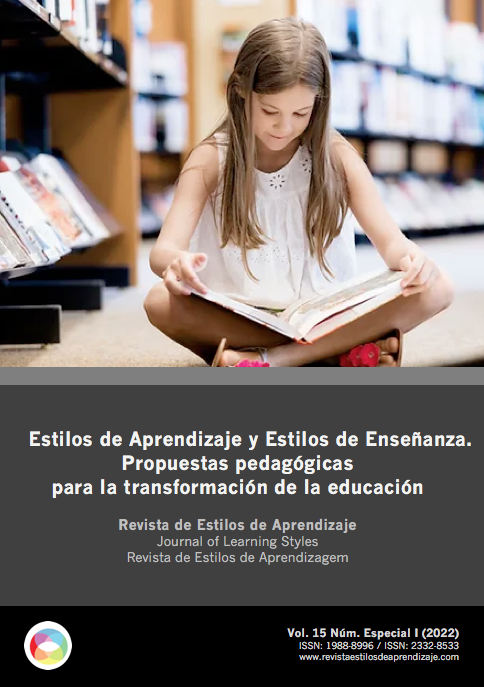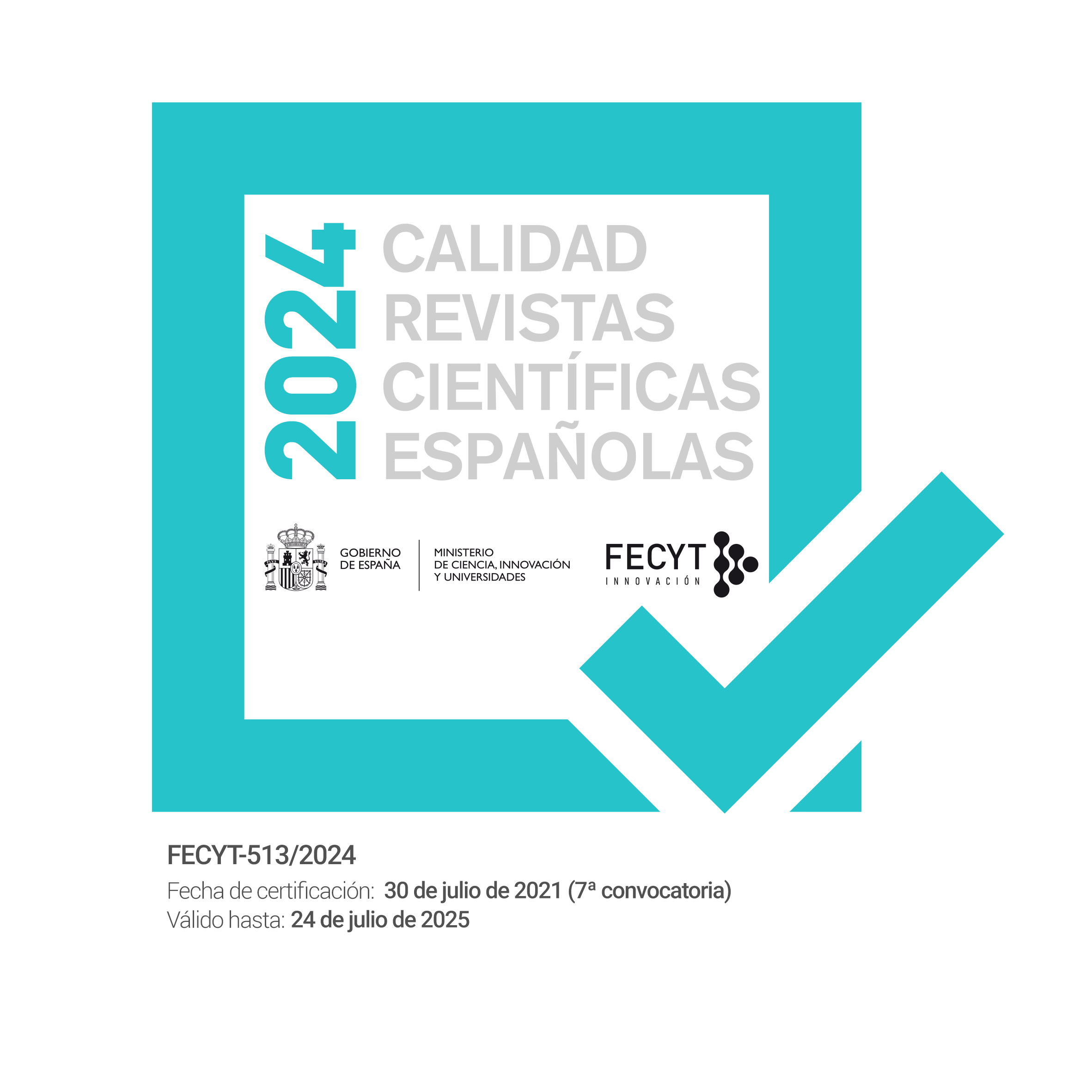Synchronous computer-mediated communication in English pronunciation teaching: A case study of Rovira i Virgili University
DOI:
https://doi.org/10.55777/rea.v15iEspecial.4431Palabras clave:
Synchronous computer-mediated communication, pronuntiatium teaching, remote teaching, English as a foreing languageResumen
El aprendizaje a distancia ha estado en el punto de mira desde la repentina aparición de la pandemia del coronavirus, impulsando de manera notable el desarrollo de dicho aprendizaje en los dos últimos años; como las universidades se vieron obligadas a cerrar a nivel mundial y los profesores enseñaron virtualmente durante el confinamiento, el uso de la Comunicación Síncrona Mediada por Ordenador (CSMO) comenzó a prevalecer. La enseñanza de la pronunciación no fue una excepción: hasta el momento las clases presenciales se valían de la tecnología como soporte educativo para mostrar vídeos y artículos en clase, y el profesorado tuvo que adaptarse rápidamente a enseñar a través de programas de videoconferencias. Aunque se ha investigado extensamente en la enseñanza de la pronunciación asistida por ordenadores, y los investigadores muestran cada vez más interés en el uso de las nuevas tecnologías dentro de la clase de pronunciación, poco se ha investigado sobre las metodologías llevadas a cabo en la instrucción virtual de la pronunciación mediada por el profesor.
Descargas
Citas
Bao, W. (2020). COVID‐19 and online teaching in higher education: A case study of Peking University. Human Behavior and Emerging Technologies, 2(2), 113-115. doi: 10.1002/hbe2.191
Calvo Benzies, Y.J. (2017). Contributions of new technologies on the teaching of English pronunciation. Language Value, 9(1), 1-35. doi: 10.6035/LanguageV.2017.9.2
Gallego Trijueque, S., Matarín Rodríguez-Peral, E., & Fondón Ludeña, A. (2020). La didáctica digital pre-pandémica. Punto de partida para una transformación educativa en la enseñanza superior. Revista De Estilos De Aprendizaje, 13(Especial), 5–16. http://revistaestilosdeaprendizaje.com/article/view/2234
Gomede E, Miranda de Barros R, de Souza Mendes L. (2020) Use of Deep Multi-Target Prediction to Identify Learning Styles. Applied Sciences 10(5), 1756. https://doi.org/10.3390/app10051756
Hodges, C., Moore, S., Lockee, B., Trst, T., & Bond, A. (2020). The difference between emergency remote teaching and online learning. Educause Review. https://er.educause.edu/articles/2020/3/the-difference-between-emergency-remote-teaching-and-online-learning
Juárez Díez, C., & Hinojosa Hernández, E. (2021). Senior high school students’ learning styles and experiences in the emergency remote teaching. Revista De Estilos De Aprendizaje, 14(28), 61–73. http://revistaestilosdeaprendizaje.com/article/view/3372
Krishnan, I. A., Ching, H., Ramalingam, S., Maruthai, E., Kandasamy, P., Mello, G., Munian, S., & Ling, W. (2020). Challenges of learning English in 21st century: Online vs. traditional during COVID-19. Malaysian Journal of Social Sciences and Humanities (MJSSH), 5(9), 1 - 15. doi: 10.47405/mjssh.v5i9.494.
Lin, H. (2015). Computer-mediated communication (CMC) in L2 oral proficiency development: A meta-analysis. ReCALL, 27(3), 261-287. doi:10.1017/S095834401400041X
Moser K.M., Wei, T., & Brenner, D. (2021). Remote teaching during COVID-19: Implications from a national survey of language educators. System, doi: 10.1016/j.system.2020.102431
Nguyen, N. (2020). A New trend in pronunciation teaching, MITESOL Journal (2)1 https://scholarworks.gvsu.edu/mitesol/vol2/iss1/
O-Brien, M. G., Derwing, T. M., Cucchiarini, C., Hardison, D. M., Mixdorff, H., Thomson, R. I., Strik, H., Levis, J. M., Munro, M. J., Foote, J. A., & Levis, G. M. (2018). Directions for the future of technology in pronunciation research and teaching. Journal of Second Language Pronunciation, 4, 182-206. doi: 10.1075/jslp.17001.obr
Quesada Vázquez, L. (2021). Teaching English pronunciation online during the COVID-19 coutbreak. Proceedings of the 7th International Conference on Higher Education Advances (HEAd’21), Universitat Politècnica de València, 351-358. http://dx.doi.org/10.4995/HEAd21.2021.12906
Rahiem, M. (2020). The emergency remote learning experience of university students in Indonesia amidst the COVID-19 crisis. International Journal of Learning, Teaching and Educational Research, 19(6), 1-26. doi: 10.26803/ijlter.19.6.1
Rapanta, C., Botturi, L., Goodyear, P., Guàrdia, L., & Koole, Maguerite (2020). Online university teaching during and after the COVID-19 crisis: Refocusing teacher presence and learning activity. Postdigit Sci Educ, 2, 923–945. doi: 10.1007/s42438-020-00155-y
Zeinali Nejad, M., Golshan, M., & Naeimi, A. (2021a). Pronunciation achievement in computer-mediated communication (CMC) Classrooms. International Journal of Foreign Language Teaching and Research, 9(38), 205-214
Zeinali Nejad, M., Golshan, M., & Naeimi, A. (2021b). The effect of synchronous and asynchronous computer-mediated communication (CMC) on learners’ pronunciation achievement, Cogent Psychology, 8(1). doi: 10.1080/23311908.2021.1872908
Walker, R. (2014). Technology for pronunciation. English Teaching Professional, 95, 29-31. https://englishglobalcom.files.wordpress.com/2014/03/technology-for-pronunciation-etp-95.pdf
Descargas
Publicado
Cómo citar
Número
Sección
Licencia
Con el envío del original, el/los autor/es declaran que conocen y aceptan, en su totalidad, la política de privacidad así como los derechos de autor de la Revista de Estilos de Aprendizaje.
La Revista Estilos de Aprendizaje ofrece acceso libre y abierto a su contenido de forma totalmente gratuita con el fin de hacer llegar la investigación científica a sus lectores y sociedad en general. Todos los contenidos digitales son de acceso libre y gratuito y se publican bajo licencia de Creative Commons:

La cesión de derechos se realiza bajo la licencia Creative Commons Reconocimiento-NoComercial-SinObraDerivada 4.0 Internacional (CC-BY-NC-ND 4.0)
Bajo esta licencia, está permitida la reproducción y difusión de los contenidos de la revista con fines educativos, sociales y de transmisión de conocimiento, sin ánimo de lucro y siempre que no se modifiquen, se cite la procedencia y la autoría.
La licencia a la que se acoge la Revista de Estilos de Aprendizaje permite copiar y distribuir los contenidos de la revista, siempre que se reconozca la autoría de la obra, especificando correctamente el autor y la entidad editora. No se puede utilizar la obra para fines comerciales y tampoco se puede alterar, transformar o generar una obra derivada a partir de esta obra.
La Revista de Estilos de Aprendizaje es una revista de acceso abierto. La publicación de artículos o reseñas en la Revista no da derecho a remuneración alguna. Así mismo, tanto para los autores como los lectores, la revista es gratuita Creative Commons Reconocimiento-NoComercial-SinObraDerivada 4.0 Internacional (CC-BY-NC-ND 4.0).
Desde la Revista de Estilos de Aprendizaje se invita al/los autor/autores a ampliar la visibilidad y el alcance de sus artículos publicados mediante la redifusión de los mismos en:
- Espacios web y redes personales, así como en encuentros y foros científicos.
- Archivos abiertos institucionales en Universidades, repositorios educativos y Centros de Investigación.
- Redes académicas y científicas (Researchgate, Academia.edu, Plubons, etc.).
Se requiere que en todos estos espacios y publicaciones se incluyan todos los datos bibliográficos de la publicación.

























